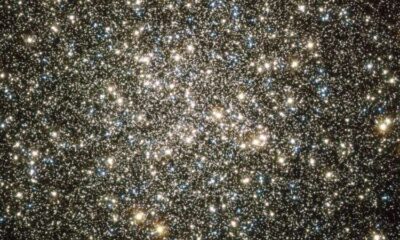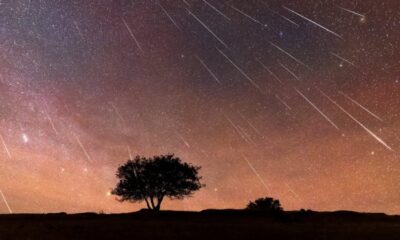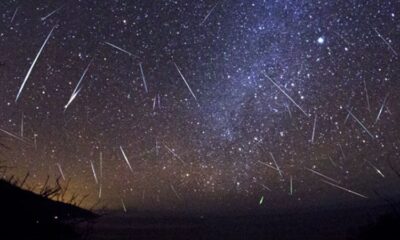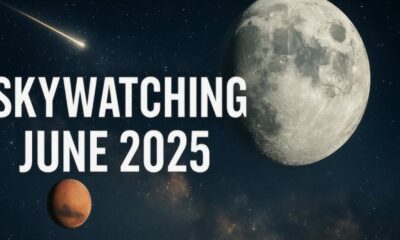Science
Things to Know about the Orionid Meteor Shower 2025, When and How to Watch
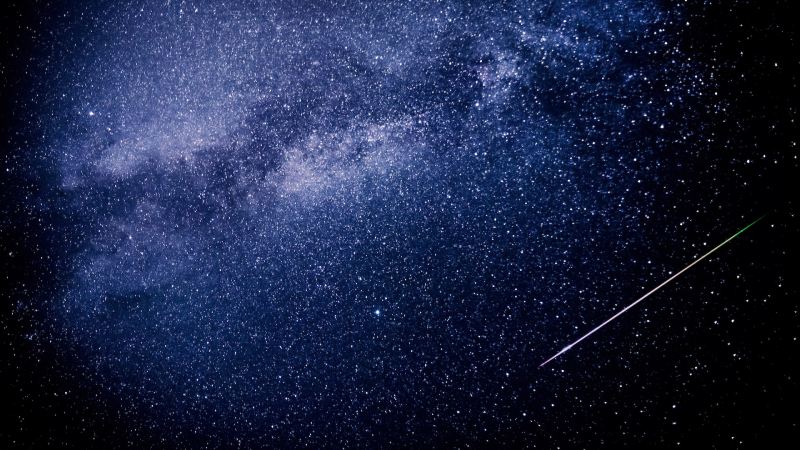
Halley’s Comet debris will generate the Orionid Meteor Shower 2025, which will peak on October 21. The best time to watch it is before dawn. These swift meteors illuminate the sky in luminous streaks that are seen from all across the planet. Skywatchers may take in a stunning cosmic display under dark skies this year as the Moon won’t be interfering.
The third week of October 2025 will see the height of the Orionid meteor shower, which is arguably the most anticipated celestial event of the year. The Orionids, which are created by the fragments of Halley’s Comet, will provide astronomers around the world with a breathtaking sight.
Every year, as our planet passes through streams of cosmic debris left behind by Halley’s Comet, the Orionid meteor shower occurs. Bright streaks appear in the twilight sky when the meteors burn up in our atmosphere. The shower gets its name because, although the radiant is just above Betelgeuse, the second-brightest star in Orion, the meteors appear to be coming from a location near it.
Stargazers are getting ready for the Orionid meteor shower, one of the year’s most stunning sky phenomena, as October progresses. This celestial display, which will peak overnight on October 20–21, 2025, is expected to produce dozens of meteors per hour against a dark, moonless sky. The radiant point in the constellation Orion makes this shower a captivating chance for anyone who wants to see the splendor of shooting stars. Everything you need to know to maximize your stargazing experience is right here.
When to watch the meteor shower
NASA said Monday and Tuesday will be the most popular viewing days, even though it will last until late November. The new moon reduces natural light, but regrettably not the pervasive light pollution in Los Angeles. The meteors will be easier to see with the naked eye under darker skies.
According to the American Meteor Society, orionids can travel at an incredible 41 miles per second, leaving dazzling trails that can persist for seconds or even minutes.
According to NASA, they also typically arrive from the southeast in the early morning, up until around two in the morning.
The Origins of the Orionid Meteor Shower
The Orionid meteor shower is an intriguing celestial occurrence with a deeper significance than a haphazard collection of shooting stars. The Earth travels through the debris left by Halley’s Comet once a year. As it moves through space, this comet, which has been circling the solar system for decades, releases rock and dust particles. The flaming streaks we see as meteors are the result of these tiny bits colliding with Earth’s atmosphere at speeds of about 41 miles per second (66 kilometers per second).
Because of their cosmic journey, the meteors appear to emanate from a location close to the constellation Orion, notably close to the red giant star Betelgeuse, giving rise to the Orionids. This relationship between Earth and one of the most well-known comets in astronomy history is astounding.
Halley’s Comet debris produces a regular pattern of meteor showers, with the Orionids being one of the most reliable and eagerly awaited occurrences every year.
Why the Orionid Meteor Shower in 2025 Is Special
The Orionid meteor shower is expected to be especially magnificent in 2025. The Orionid meteor shower will occur against a clear, moonless sky, in contrast to the August Perseid meteor shower, which was hampered by the intense light of a waning gibbous moon. The lack of moonlight will provide the best vision, making even the fainter meteors visible to the unaided eye, which is a unique benefit for skywatchers.
Observers may see 10–20 meteors per hour during the nocturnal hours of October 20–21, when activity is at its highest. The rate can spike to 50–75 meteors per hour in rare years, making this event as spectacular as the August Perseid meteor shower. It serves as a reminder that, although being reliant on a number of cosmic variables, meteor showers may nevertheless offer breathtaking views to anyone who is prepared to look up.
How to Best View the Orionid Meteor Shower
Location and timing are key to catching the most meteors. The early hours of October 21, long before dawn, will be the optimum time to see the Orionid meteor shower. The radiant point, which is situated well above the southern horizon, is most seen around this time.
It is advised that stargazers find a dark location away from the glare of city environments. The experience is enhanced by the setting’s remoteness.
Additionally, experts advise giving your eyes at least half an hour to become used to the darkness.
The amount of meteors you can see can be significantly increased during the time it takes for the human eye to acclimate to low light levels. Look in the direction of the constellation Orion after your eyes have adjusted to the darkness. Pay particular attention to Betelgeuse, the star in the top left corner of Orion’s Belt. Meteors will then speed across the sky, frequently leaving behind dazzling, multi-second luminous trails.
Peak Date and Best Time for Viewing
In 2025, the Orionid meteor shower will peak on the evening of October 21. When Orion is high in the sky, pointing south-southeast, the shower is best seen between 4:00 and 5:00 am, which is optimum predawn time. By the way, this year’s dark-sky conditions will be optimal because there won’t be any Moon interference.
Visibility and Global Reach
One notable feature of the Orionids is their visibility in both the Northern and Southern Hemispheres, which is a real global event. Even though Orion is a winter constellation, it doesn’t rise above the eastern horizon until after 11:00 p.m. local daylight saving time; instead, it appears in the early fall evening sky. With speeds of up to 66 kilometers (41 miles) per second, the Orionid meteors are incredibly fast and reach the Earth’s atmosphere.
Because of light pollution, meteors are typically faint and difficult to observe in city locations.
Go to a remote, rural location away from artificial light sources for the greatest viewing, and allow your eyes to acclimate to the darkness for 20 to 30 minutes.
Since the meteor shower is made up of several sub-showers with overlapping maxima, there will be more opportunities to see it over many nights.
The Cosmic Connection: Halley’s Comet
There is a longer cosmic saga that includes the Orionids. Earlier in the year, the Eta Aquarid meteor shower is also produced by Halley’s Comet, the same parent source.
The meteors from both showers can be seen when Earth passes through different parts of Halley’s debris path during its orbit, connecting two distinct space events to a single, recognizable comet.
How to Watch the Orionid Meteor Shower
Choose a cloud-free night, ideally on or close to October 21, 2025, which is the peak date.
Locate a location away from city lights and with an unhindered dark sky.
For the finest view of faint meteors, let your eyes to acclimate to the darkness.
Simply glance up and be amazed—no extra equipment is needed.
Amateur astronomers and skygazers alike cannot miss the Orionid meteor shower because of its unique combination of velocity, global visibility, and history.
-

 Business4 weeks ago
Business4 weeks agoGoing Beyond Expectations: Apex Service Partners and Putting People First
-

 Business4 weeks ago
Business4 weeks agoKurt James Wichman Explains How Global Brands Go Local
-

 Entertainment4 weeks ago
Entertainment4 weeks agoVISHAAD, Starring Rajeshwar, Ashish Vidyarthi and Ketaki Narayan, Heads to KIFF 2025!
-

 Real Estate4 weeks ago
Real Estate4 weeks agoStephen Monro on the Evolution of Mediation Services in Real Estate
-

 Business3 weeks ago
Business3 weeks agoWhy Hundreds Choose Movers in Raleigh for a Fresh Start
-

 Travel3 weeks ago
Travel3 weeks agoBwindi’s Gorilla Tourism: Saving Wildlife, Empowering Communities
-

 Tech3 weeks ago
Tech3 weeks agoGoogle Offers New Travel-related Features To Search And Launches Its AI “Flight Deals” Tool Around The World
-

 Education3 weeks ago
Education3 weeks agoJoseph Curran: Using Legal Writing and Advocacy to Simplify Complex Issues for Clients



